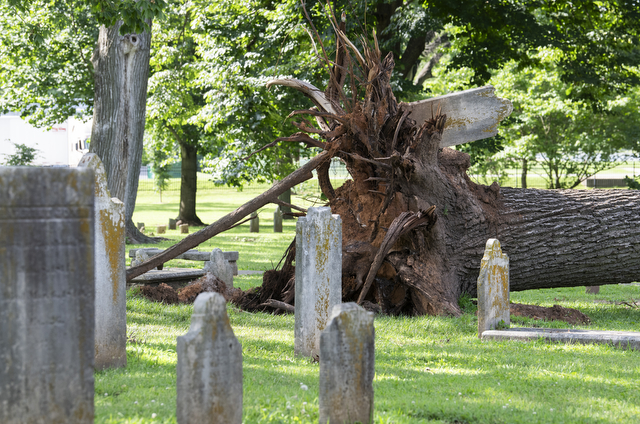Bowling Green making plans for bicentennial party
Published 11:40 am Friday, July 20, 2012
Bowling Green turns 200 this year, and preparations are under way to throw the city a birthday party.
Bicentennial celebrations for the city, which incorporated in 1812, will kick off Sept. 18 and will run through the week.
A proposed schedule for the event was presented Tuesday to members of the Bowling Green Board of Commissioners by Public Information Officer Kim Lancaster.
Plans for the event have been under way since about the first of the year, she said. The third week in September was chosen because it gave staff time to prepare for a planned November Spotlight on Bowling Green television spot and because weather should be mild for a planned outdoor festival at that time of year.
One of the goals of the celebration is to get children involved in the Bowling Green community, Lancaster said.
To support that goal, the city will have a writing contest for Bowling Green and Warren County students in the fifth through eighth grades for the 2012 school year. Students will be asked to write an essay, poem or narrative about why they love Bowling Green or what they love about Bowling Green.
The writings should be 1,000 words or less and will be evaluated by a panel of judges.
It will be interesting to see what children see as things to love about the city, Lancaster said.
“I think it’ll be neat to see what their reasoning is,” she said.
One winner will receive a $300 prize, she said. The second-place winner will receive $150 and the third place winner will receive $50. A entry application is available on the Bowling Green city website.
The bicentennial celebrations are set to begin Sept. 18 during a commission meeting. Mayor Bruce Wilkerson will read a proclamation declaring it Bowling Green’s bicentennial celebration week.
The rest of the week will include a giveaway of tickets to the Kentucky Museum, the Historic RailPark and Train Museum and Lost River Cave, Lancaster said.
She also plans on using social networking websites to tweet about events in Bowling Green history, she said.
“We’re hoping to get people involved in our history as well,” Lancaster said.
An open house at City Hall will take place from 4 to 6 p.m. Friday, Sept. 21 with refreshments provided. The winners of the city’s writing contest will be announced at the event.
Celebrations will culminate with a festival Sept. 22, which will take place at Circus Square Park from 10 a.m. to 2 p.m. Food and drink vendors will be at the event, Blue Light Special will perform and children’s activities such as inflatables and a giant trampoline with bungee ropes will be available, Lancaster said.
“We’re just trying to make sure everyone’s got something really fun to do,” she said.
A couple of hundred people are expected to turn out for the festival and between 150 and 200 people are expected to come to the open house, Lancaster said.
Laura Harris, graphic designer and broadcast coordinator for the city, has been doing research into Bowling Green’s early history at the Kentucky Museum to compile historical facts to be used during the celebrations on promotional materials.
Minutes from meetings of the Bowling Green Board of Trustees, which governed the city before the board of commissioners, and early editions of city newspapers were among the sources she looked at, Harris said.
Harris learned a lot about the history of the city by looking through those documents, such as the city’s reliance on the Barren River as a hub for commerce and the Bowling Green’s struggle with two other speculative towns to become the county seat of Warren County, she said.
“Once you start getting into it, it gets interesting,” Harris said.
The act that incorporated the city of Bowling Green was approved by the Kentucky General Assembly on Jan. 6, 1812, said Jonathan Jeffrey, manuscripts coordinator for the Kentucky Museum. A number of other county seats were also incorporated in the same act including Somerset, Greenville, Henderson and Madisonville.
The population for the city was small at the time. An estimated population in 1800 was about 500 people, according to information provided by Jeffrey.
The city became a transportation hub, being located along the major road linking Louisville and Nashville as well as Cumberland Trace, Jeffrey said.
Steamboats were traveling through the area in the 1820s. Waterways had locks and dams ahead of many in the state due to the influence of some prominent Bowling Green citizens with the legislature, he said.
“Transportation in and out of this area is really important,” Jeffrey said.
Bowling Green is located in a region south of Green River where veterans of the Revolutionary War were given land on which to settle. Former soldiers either came to the area to settle on their plots of land or traded or sold those plots to other settlers, he said.
Warren County had officially become a county in 1797. The area had previously been part of Logan County, but Warren was established as part of an effort to get to a point where everyone living in a county could reach the county seat in only a day of travel, Jeffrey said.






